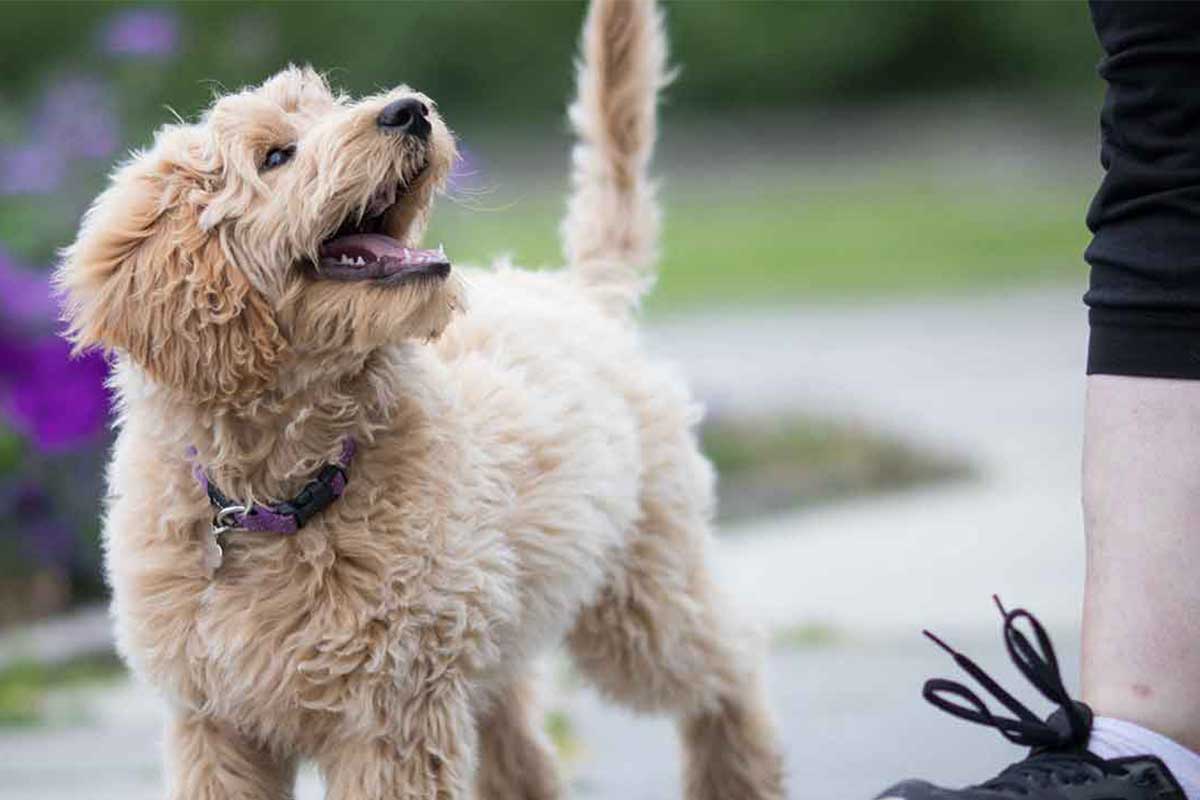“Social referencing” is a fancy term for a familiar phenomenon: when uncertain about a new situation, you check to see how everyone else is reacting. Are they scared, happy, calm, anxious? We look to others for clues in case they have previous experience that we don’t. Other social animals do this as well, and it’s especially important for the young, who haven’t yet learned as much about the world.
Dogs are particularly interesting because they not only do this with their own species, but also with humans. Researchers have shown this with experiments modeled on the ones they do with human infants. Show babies a new object, and they’ll look at the object and then at a caregiver. If they get a positive vibe from that person, they’re more likely to reach out for the object and interact with it than if the signals they get are negative.
How Dogs Respond
Dogs do the same: show them something unfamiliar and sort of scary and they’ll look back and forth between the object and a person and behave differently depending on how the person is reacting. They also respond differently to their owner. When they were shown a fan with ribbons tied to it, dogs approached it more quickly when their owner spoke to them in a happy voice than when a stranger did.
A recent study in the journal Animal Behavior shows that even 8-week-old puppies look for and respond to human cues in this way. Using a similar slightly scary fan with ribbons, puppies were tested with a human who had interacted with them for a little while beforehand. (In this experiment, the person reacted either positively or neutrally, so as not to expose impressionable puppies to a negative experience.) When the person smiled and spoke happily, the puppies were more likely to approach the fan and did so more quickly.
The study also tested puppies with their mother and with another dog. Both dogs became accustomed to the scary thing beforehand, so they just sat there calmly. Likewise, the puppies would look back and forth between the fan and the other dog. Unsurprisingly, they trusted their mother more. They were less likely to approach the fan and did so more slowly when the other dog was a stranger but were still more likely to approach it than when they were alone.
Human Influence
This research shows that even before they’ve had much life experience with humans, dogs look to us for signals. With their long history of domestication and living alongside humans, this seems to be part of their nature.
We probably all know that our dogs look to us when they’re uncertain, and we instinctively encourage them when we can. Likewise, people with fearful or anxious dogs may notice that their dogs are likely to pick up on anxiety when owners are worried about how they’re going to react. This research shows that owner attitude really does make a difference. Many of us also believe that dogs can be helped by the presence of another confident, trusted dog, and this suggests that we might be right about that as well.
This article was reviewed/edited by board-certified veterinary behaviorist Dr. Kenneth Martin and/or veterinary technician specialist in behavior Debbie Martin, LVT.








